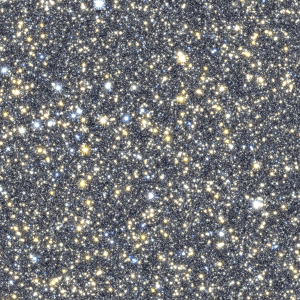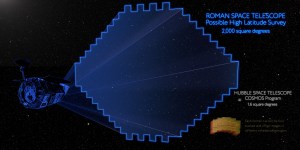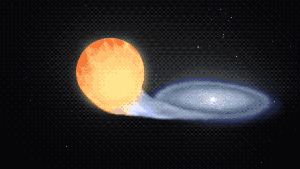How NASA’s Roman Space Telescope Will Chronicle the Active Cosmos
NASA’s Nancy Grace Roman Space Telescope will pair space-based observations with a broad field of view to unveil the dynamic cosmos in ways that have never been possible before. “Roman will work in tandem with NASA observatories such as the James Webb Space Telescope and Chandra X-ray Observatory, which are designed to zoom in on […]

NASA’s Nancy Grace Roman Space Telescope will pair space-based observations with a broad field of view to unveil the dynamic cosmos in ways that have never been possible before.
“Roman will work in tandem with NASA observatories such as the James Webb Space Telescope and Chandra X-ray Observatory, which are designed to zoom in on rare transient objects once they’ve been identified, but seldom if ever discover them,” said Julie McEnery, Roman’s senior project scientist at NASA’s Goddard Space Flight Center in Greenbelt, Maryland. “Roman’s much larger field of view will reveal many such objects that were previously unknown. And since we’ve never had an observatory like this scanning the cosmos before, we could even find entirely new classes of objects and events.”
The mission’s High Latitude Time-Domain Survey is well-designed to discover a particular type of exploding star that astronomers can use to trace the evolution of the universe and probe possible explanations for its accelerated expansion. And since this survey will repeatedly observe the same large vista of space, scientists will also see sporadic events like stellar corpses colliding and stars being swept into black holes.
The survey will look beyond our galaxy to observe the same patch of sky approximately every five days for two years. Stitching these observations together like stop-motion animation will create movies that will reveal a wealth of transient events.
Retreating Stellar Sparks
Astronomers will hunt through all this data for a special kind of exploding star called type Ia supernovae. These phenomena originate from certain binary star systems that contain at least one white dwarf – the small, hot core remnant of a Sun-like star. In some cases, the dwarf may siphon material from its companion. This triggers a runaway nuclear reaction that ultimately detonates the thief. Astronomers have also found evidence supporting another scenario, involving two white dwarfs that spiral toward each other until they merge. If their combined mass is high enough, they, too, may produce a type Ia supernova.
Since these explosions each peak at a similar, known intrinsic brightness, astronomers can use them to determine how far away they are by simply measuring how bright they appear. Astronomers will use Roman to study the spectrum of light from these supernovae to find out how rapidly they appear to be moving away from us due to the expansion of space.
By comparing how fast type Ia supernovae at different distances are receding, scientists will trace cosmic expansion over time. This will help us understand whether and how dark energy – the unexplained pressure thought to be speeding up the universe’s expansion – has changed throughout time. Using these and other Roman measurements should also help clear up mismatched measurements of the Hubble constant, which is the universe’s current expansion rate.
“Roman will paint a more vivid picture of our universe’s past and present, giving us new clues about its possible fate,” said Rebekah Hounsell, a research scientist at the University of Maryland, Baltimore County and Goddard, who is exploring ways to optimize Roman’s High Latitude Time-Domain Survey. “Its findings could reshape our understanding of the cosmos.”
Fleeting Cosmic Wonders
Because of the way this survey will observe the cosmos, it will also spot other rare phenomena. Through Roman, we will witness the birth of new black holes that form when neutron stars – the cores of exploded stars that weren’t quite massive enough to collapse to form black holes on their own – merge. These titanic events create ripples in the fabric of space-time and brilliant kilonova explosions.
The mission is also expected to reveal several dozen tidal disruption events, which happen when a star venturing too close to a black hole is shredded by the black hole’s extreme gravity. The stellar shrapnel generates a huge amount of light as it speeds toward the black hole. Roman will pick up these flares of energy to learn how black holes affect their surroundings.
The survey will also allow astronomers to explore variable objects, like active galaxies whose cores each host an extremely bright quasar. A quasar is a brilliant beacon of intense light powered by a supermassive black hole. The black hole voraciously feeds on infalling matter that unleashes a torrent of radiation. Roman’s steady gaze will help astronomers study how and why these outbursts fluctuate in brightness.
And by finding hundreds of faint, faraway quasars, Roman will also allow scientists to probe the period of reionization. During this cosmic epoch, scientists think intense ultraviolet light from quasars stripped electrons from atoms and turned them into ions. This transition ushered in “cosmic dawn,” as the universe went from being mostly opaque to transparent, allowing visible and ultraviolet light to travel freely.
“This Roman survey will provide a treasure trove of data for astronomers to comb through, enabling more open-ended cosmic exploration than is typically possible,” McEnery said. “We may serendipitously discover entirely new things we don’t yet know to look for.”
The Nancy Grace Roman Space Telescope is managed at NASA’s Goddard Space Flight Center in Greenbelt, Maryland, with participation by NASA’s Jet Propulsion Laboratory and Caltech/IPAC in Southern California, the Space Telescope Science Institute in Baltimore, and a science team comprising scientists from various research institutions. The primary industrial partners are Ball Aerospace and Technologies Corporation in Boulder, Colorado; L3Harris Technologies in Melbourne, Florida; and Teledyne Scientific & Imaging in Thousand Oaks, California.
Download high-resolution video and images from NASA’s Scientific Visualization Studio
By Ashley Balzer
NASA’s Goddard Space Flight Center, Greenbelt, Md.
Media contact:
Claire Andreoli
NASA’s Goddard Space Flight Center, Greenbelt, Md.
301-286-1940
Share
Details
Related Terms
301-286-1940
What's Your Reaction?












































